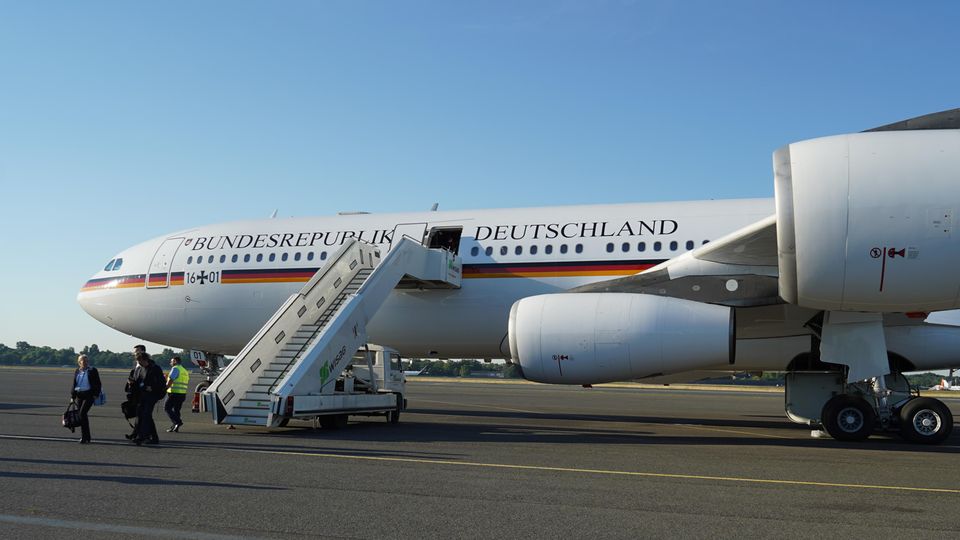Government Airbus
Kerosene shower for the environment: what airplanes do when they have problems
The pilots of the government Airbus A340 drain the fuel.
© Sina Schuldt / DPA
The government Airbus with Foreign Minister Annalena Baerbock on board wanted to land in Abu Dhabi and refuel. After take-off there was a breakdown – and in order to be able to land again, the pilots sprayed 80 tons of kerosene.
The flight readiness has problems again, Secretary of State Annalena Baerbock had to make an involuntary stop. The government Airbus A340 failed to retract the flaps. During the stopover in Abu Dhabi, the plane had a full tank and 110 tons of kerosene on board. The total weight was 271 tons. The jet flew on for 90 minutes, dumping about 80 tons of kerosene. What does that mean? The tanks are opened, but the fuel is not simply “poured out”. It is distributed by nozzles. Due to the volatility of kerosene, the fuel is nebulized and does not reach the ground as a downpour.
The landing weight is reduced
This procedure is commonly used in aviation for problems. It serves to achieve the permissible landing weight and in very serious cases it can also reduce the extent of a possible fire. The problem behind it: The jets can and may take off more heavily than they land. If problems arise shortly after take-off that force the flight to be aborted, the fully fueled machine is too heavy. The difference between the maximum take-off and landing weight is 100 tons for a Boeing 747-400. With the Airbus it was 80 tons. For economical operation, many machines are fully loaded when starting. In the event of a serious malfunction, fuel draining or fuel dumping or fuel jettison is unavoidable.
Rules when draining
Pollution of the environment cannot be avoided, but special rules are intended to keep damage to the ground to a minimum. The machine must reach a minimum altitude of 1800 meters and a special course is assigned to it. So it must not fly in a circle so that the area is not swept twice. Nevertheless, eight percent of the kerosene dumped can still end up on the ground. This number can be reduced at higher altitudes, which is usually reached, and strong currents.
Controversial method
Between 2010 and 2016, a total of around 3,590 tonnes of kerosene were dumped over Germany in 121 cases. Because the kerosene is distributed in extremely fine droplets, the load is considered non-critical. The droplets in the air don’t come to the ground later either, they are converted into water and carbon dioxide by the sun’s radiant energy. In terms of environmental pollution, the spraying of kerosene cannot be compared to a leak in an oil tanker.
Even if no soil contamination could be detected, this method is controversial. Especially in densely populated regions like Germany. Especially since it is only an emergency measure in a limited sense. Most machines can also land safely if the maximum landing weight is exceeded. However, after such an overweight landing, the aircraft would have to be extensively examined for damage. These costs are avoided by draining.




